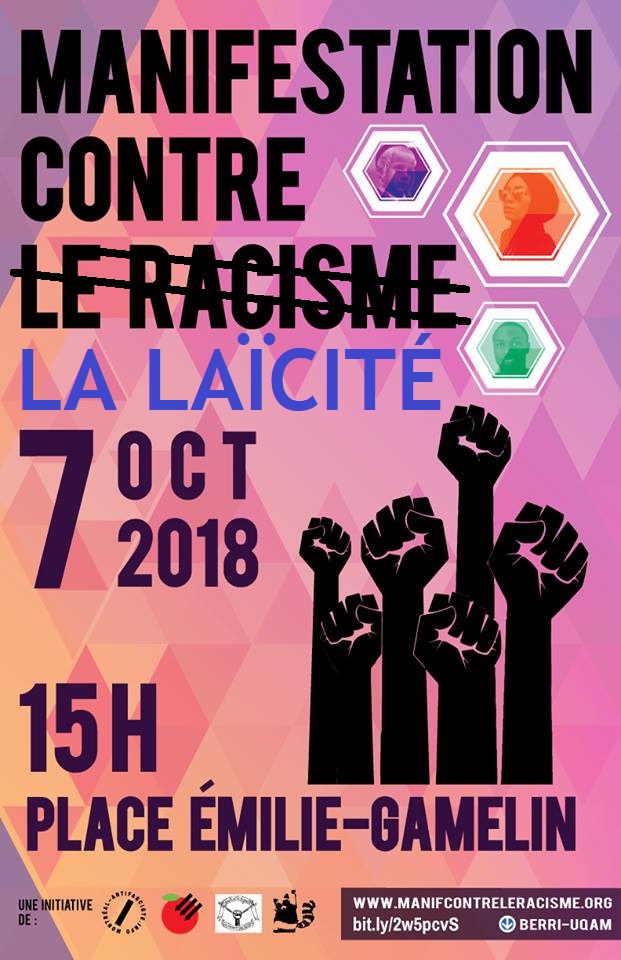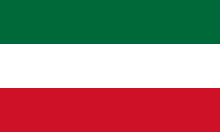2018-12-29
In this blog I review a series of very dubious articles which appeared over the last year or so on the website TheConversation, all of which reveal a pronounced anti-Quebec prejudice.
Sommaire en français Dans ce blogue je passe en revue une série de textes très douteux, parus depuis un peu plus d’un an sur le site web TheConversation, qui révèlent tous un fort préjugé anti-Québéc.
Dear Editor of TheConversation,
When I first read the article “Québec’s fashion police: A century of telling women what not to wear” by Donica Belisle in TheConversation, I thought it was probably the worst article I had ever read. The article dishonestly attempts to equate two actions which are diametrically opposed: Catholic obscurantism in the past with Quebec’s current efforts to reduce the influence of religious obscurantism on public institutions. Belisle displays total ignorance of the secularism issue which is at the heart of this whole controversy. Furthermore, she denigrates Quebec society by painting it with the brush of the Catholic far-right, while ignoring the Islamist far-right which is far more active in Quebec.
My colleague Michel Lincourt has written to TheConversation in order to explain just how shoddy Donica Belisle’s article is. I certainly agree with his criticism. But I consider that he was in fact a little too kind. Firstly, he used the expression “Quebec bashing” to describe Belisle’s article, whereas in my opinion a stronger term, such as “anti-Quebec propaganda” or “anti-Québécois racism” for example, might be more appropriate. Secondly, Michel concentrates on one single article and thus perhaps did not notice a disturbing pattern of which TheConversation is guilty.
For my part, I did a search for “Quebec” on your website and discovered that Belisle’s article is not the worst. My search turned up a list of six other articles, all published within the last 15 months, which range in quality from very bad to atrocious. They all have much in common with Belisle’s writing. I list them here, with a brief summary of each.
- Quebec’s niqab ban uses women’s bodies to bolster right-wing extremism, Yasmin Jiwani, 2017-10-23.
This screed condemns the previous Québec government’s Bill 62 while completely misunderstanding its import. A ban on both face-coverings in public services and religious symbols worn by public servants would be an excellent idea, but the Bill 62 did NOT do that. It did not enact religious neutrality—and even less secularism. It simply pretended to ban face-coverings while legislating exceptions which made the ban extremely weak. The purpose was not “to bolster right-wing extremism” as Jiwani claims in her paranoid title. The Bill was a cynical attempt by the Quebec Liberal Party to pretend to satisfy the Québécois’ overwhelming desire for secularism while doing practically nothing. But even such an impotent law was too much for some, such as Jiwani, who raves about the “ultra-right” in Quebec. The only far-right in Québec is constituted by those who oppose secularism by dishonestly and grossly misrepresenting it. - The link between Quebec’s niqab law and its sovereignty quest, Efe Peker, 2017-10-29.
The title’s obvious purpose is to frighten the reader by brandishing the boogeyman of “sovereignty.” Peker then starts by reassuring the reader that he is not “old-stock Quebecois” because, apparently, the opinion of such a person cannot be trusted. That sounds like racism to me. Peker employs the tendentious term “Catho-laïcité” instead of secularism or laïcité, thus revealing his prejudices once again. Enormous progress has been made in removing the Catholic symbols which were ubiquitous in Quebec only decades ago. The Charter of Secularism proposed in 2013-2014, an excellent initiative which Peker dismisses as a “mess,” would have applied to all religions, but Peker sees only religious discrimination. - Islamophobia in Québec: An ideology rooted in 20th century imperialism, Frederick Burrill, 2017-12-10.
This article immediately loses all credibility because of its use of the loaded and unacceptable expression “Islamophobia.” To fear Islam (or any other religion) is not a phobia, rather it is simply due diligence. Burrill refers to the journalist and secularist Janette Bertrand as “feminist” where the quotes around the word clearly indicate his contempt for the former television personality, much loved by Québécois. Finally, Burrill’s attempt to denigrate contemporary Quebec secularism by rooting it in Catholic missionary propaganda of the early 20th century is beyond ridiculous. - The hypocrisy of Québec’s move to ban religious dress, Richard Moon, 2018-10-22.
Moon repeats a theme we have already heard countless times from numerous anti-secularists: the observation that keeping the crucifix in the National Assembly is “hypocrisy.” But like all of them, he fails to recognize that removing the crucifix without banning religious symbols worn by public servants would also be hypocritical. The only correct solution is to do both: both government installations and public servants on duty must be free of obvious religious symbols. Moon fails to mention that secularist organizations in Quebec overwhelmingly supported both the Charter of Secularism in 2013-2014 and CAQ’s recent proposals while at the same time calling for removal of that crucifix. - Québec’s push to ban the hijab is ‘sexularism’, Yasmin Jiwani, 2018-11-05.
The very title of this article is insane. Jiwani denigrates CAQ for being “exclusionary” and throws in some fatuity about “the margins of race, religion and gender,” only one of which—religion—is relevant to the issue. Two things are clear however: (1) the author deliberately conflates race and religion, so that she can then throw false accusations of racism at secularists; and (2) she presents the wearing of the Islamist veil as a woman’s right of choice. Both are unacceptable deceptions practised regularly by Islamist ideologues. The latter is an example of their inversion strategy, i.e. presenting a sexist constraint (the veil) as a “right,” thus rebranding misogyny as pseudo-feminism. - Notwithstanding clause or not, Québec must accommodate its employees, Sébastien Parent, 2018-12-05.
Parent fails to distinguish between religious neutrality and secularism, as if they were synonyms. The former is a weak and incomplete subset of the latter, lacking the necessary separation between religions and state which is at the core of secularism. Parent repeatedly uses the misleading expression “reasonable accommodation” when in fact he is talking about religious accomodation. The former is a euphemism whose true meaning is the latter. The fallacious word “reasonable” distracts from the fact that accommodating religions is never acceptable. Making exceptions to laws in order to accommodate religious practices is to grant unacceptable privileges to religions. The fact that courts sometimes impose such accommodations simply shows that legislation needs to changed. In the meantime, the Quebec government will wisely use the notwithstanding clause to work around this problem.
Beyond the particularities of each of these seven articles, there are common threads running through the series:
- A complete and wilful misunderstanding of secularism and a failure even to cover the relevant issues.
- False accusations of discrimination against Muslims. The observation that bans on religious symbols will appear to target Muslims is a result of the fact that (a) Islamists claim to speak for all Muslims in general (they do not) while (b) these same Islamists promote the wearing of the misogynist veil in order to gain political influence. (Thanks largely to incompetent journalists, the strategy is working.)
- An adulteration and inversion of feminism, as if the veil were a feminist choice, when in reality it is one of the worst expressions of misogyny ever invented.
- Conflation of race (innate, immutable characteristics of the individual) with religion (a choice which can change).
Even more serious is what is lacking from this series of articles:
- No attempt to understand republicanism and universalism and how they inform and support secularism.
- No attempt to present the very solid arguments in favour of bans on religious symbols and face-coverings in public services, let alone even begin to refute them.
- No attempt to present the views of secular, modern Muslims who support religious symbol bans.
- No mention of the fact that Quebec already bans political symbols worn by public servants on duty. Extending this to religious symbols is an eminently reasonable and fair measure to take.
- No acknowledgement whatsoever of the problematic nature of the expression “Islamophobia.”
- No consideration of multiculturalism and the many relevant criticisms of that ideology which encourages isolation of communities.
- No criticism whatsoever of the problems with Islam and Islamism. (Example: The extremely damaging taboo against apostasy.) Apparently only Christian—and preferably Catholic—obscurantism may be mentioned, let alone criticized.
- Failure to recognize that Québécois are more advanced on the issue of secularism than Canadians outside Quebec and, especially, far more progressive that hostile media such as TheConversation.
I notice that your website’s motto is “Academic rigour, journalistic flair.” What a bad joke. Your series of articles about Quebec and secularism is a cesspool of journalistic incompetence, wilful ignorance and contempt for the Québécois, coupled with a disturbing tendency to repeat some of the classic elements of Islamist propaganda.


